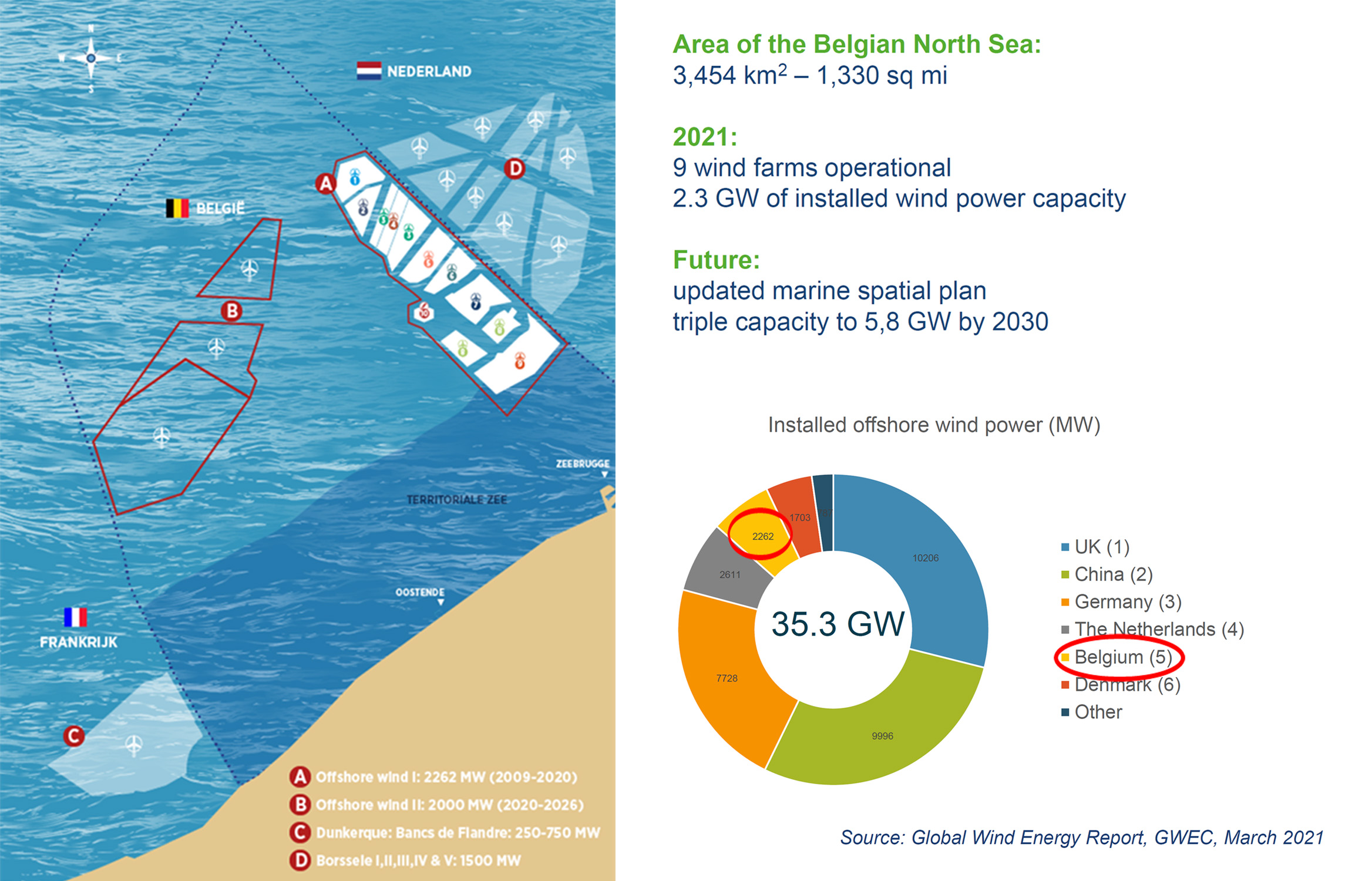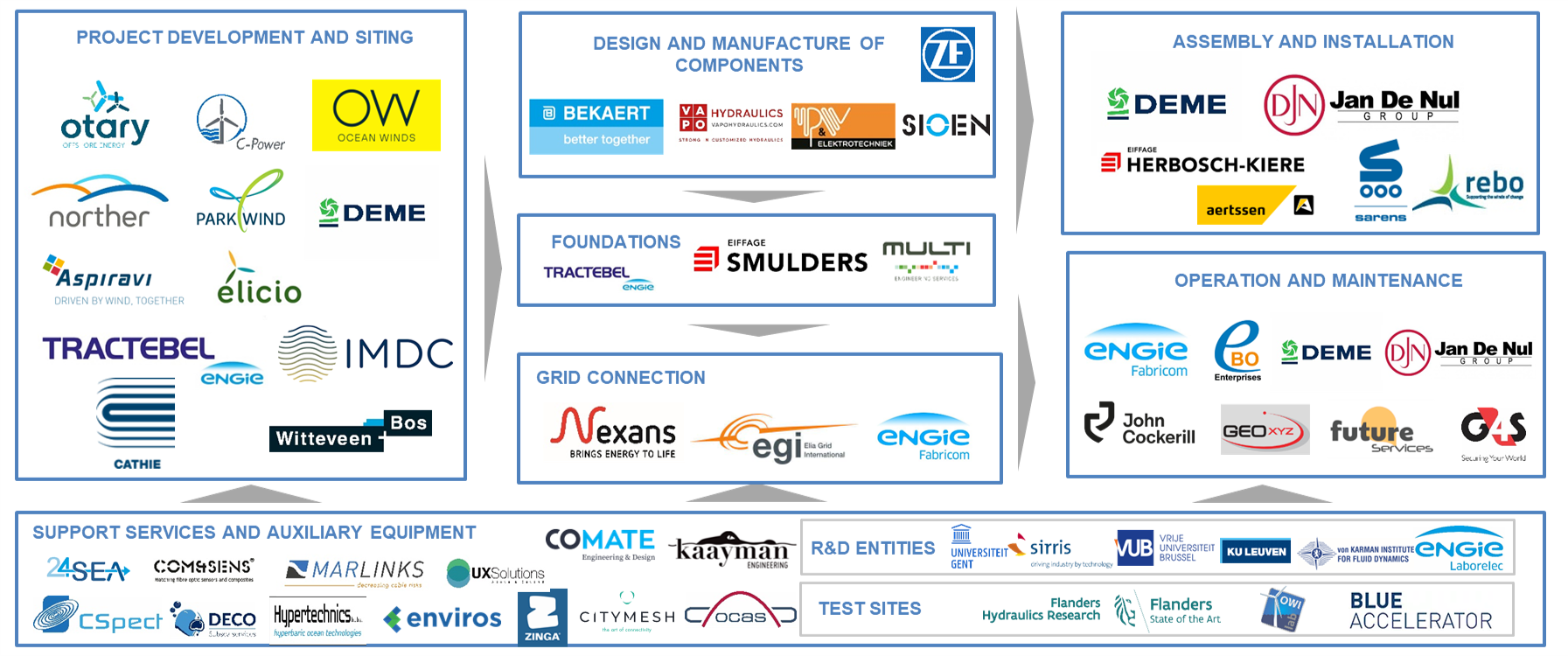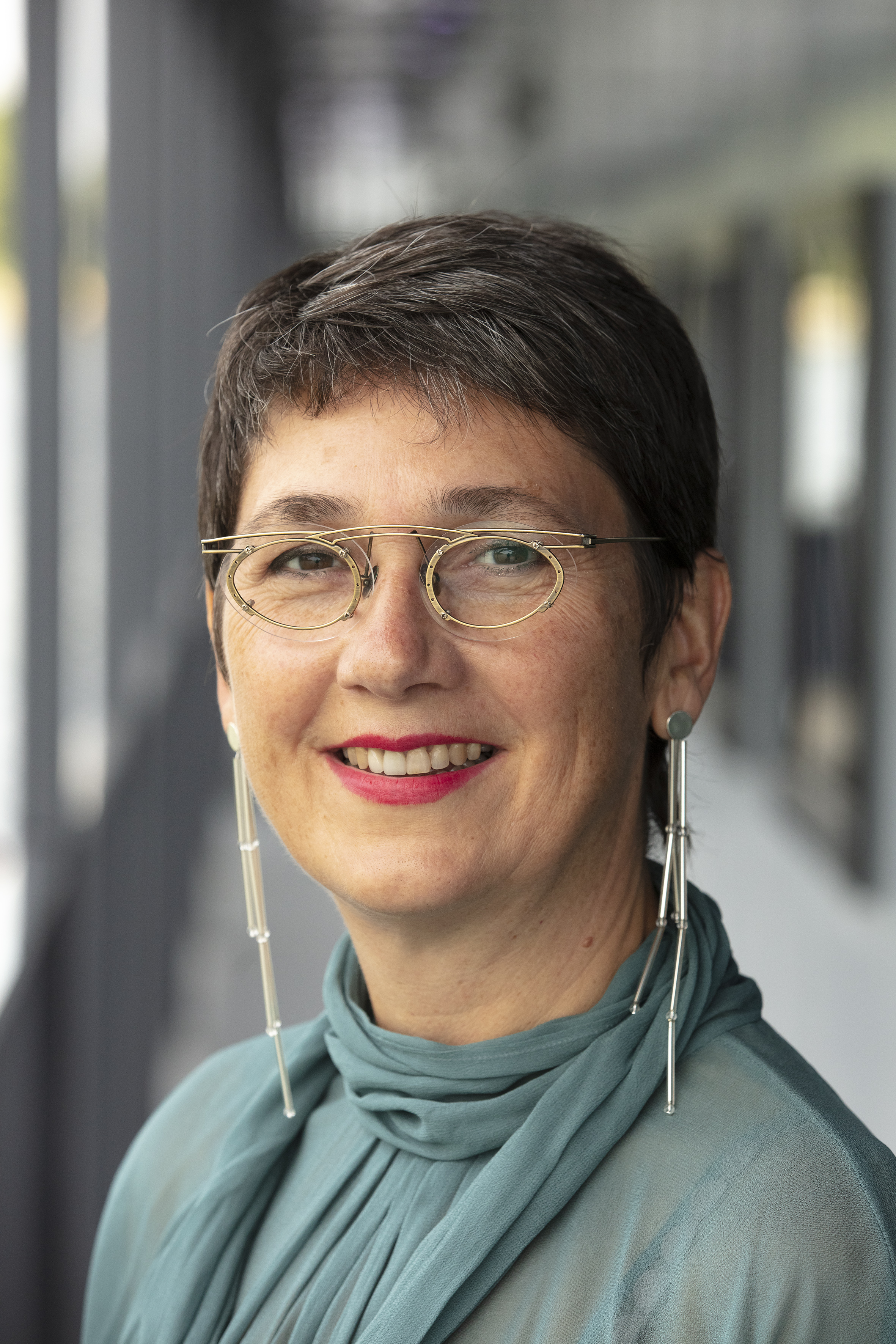Main navigation (level 2) (loaded programmatically)
Renewable energy production from offshore wind constitutes an important part of our blue economy. It is a focus area of Blue Cluster. More than 50% of the companies involved in collaborative initiatives are SMEs. This is of course, no surprise given the important role of SMEs in the economic fabric of Flanders.

Belgium's coastline is just 67 km long, but it is home to the second largest offshore wind power capacity per capita worldwide. The nine offshore wind farms cover an area of 3,454 km2 of the North Sea. They produce a capacity of 2.3 GWatts, meaning the coastline ranks sixth in the world according to the Global Wind Energy Report (GWEC) of March 2022. The aim is to almost triple this capacity to 5.8 GWatts by 2030.
Flanders' evolution into a major offshore wind player
Our first offshore wind farm became operational in 2009. We embraced this technology early on, gaining us an impressive market share of the global offshore wind energy market. There is a wide range of active contractors in Flanders offering design, procurement, construction and installation. They offer integrated solutions to offshore wind developers around the world. Flanders' market share in the construction of foundations, connectors, offshore high-voltage substations and in the installation of foundations, turbines and cables exceeds 30% of the global market, if you discount China.
Recent Flemish innovations allow the installation of monopile foundations in locations where that was previously inconceivable. As a result, affordable renewable energy is becoming more accessible to many communities around the world. Yet more Flemish research is enabling optimisation of the lifespan and energy production of offshore wind farms and a reduction in both operating and maintenance costs. Flemish companies are behind new approaches which continuously monitor the steel structures in wind farms, such as the foundations, masts and cables. These approaches also help us understand of how turbine foundations interact with the seabed during storms and earthquakes. Companies are combining this information with advanced data analysis and modelling to guarantee safety, estimate turbine lifespans, improve new wind farm designs, and ultimately, to significantly reduce risks. Other remarkable innovations focus on minimising human intervention thanks to digitalisation and automation, such as in drone use and robotic technology.
Minimising the impact on the ecosystem thanks to Belgian innovation
It is vital that we minimise the impact on the marine ecosystem and protect it wherever possible. There are several Belgian research projects doing just that, focusing on efficient use of marine space and on multiple use. There have already been several successful pilot projects combining marine aquaculture, passive fishing techniques and habitat restoration. We hope to go a step further and move on to designs inspired by nature that integrate new energy production techniques like offshore floating solar parks.
New approaches to energy transport, grid balancing and storage and system integration are also being explored. These are necessary to ensure the long-term stability of the electricity grid and to establish interconnections with other countries surrounding the North Sea. Take for example batteries, conversion of offshore energy into green hydrogen and derivatives and freshwater production.

Ann Overmeire
COO of Blue Cluster
